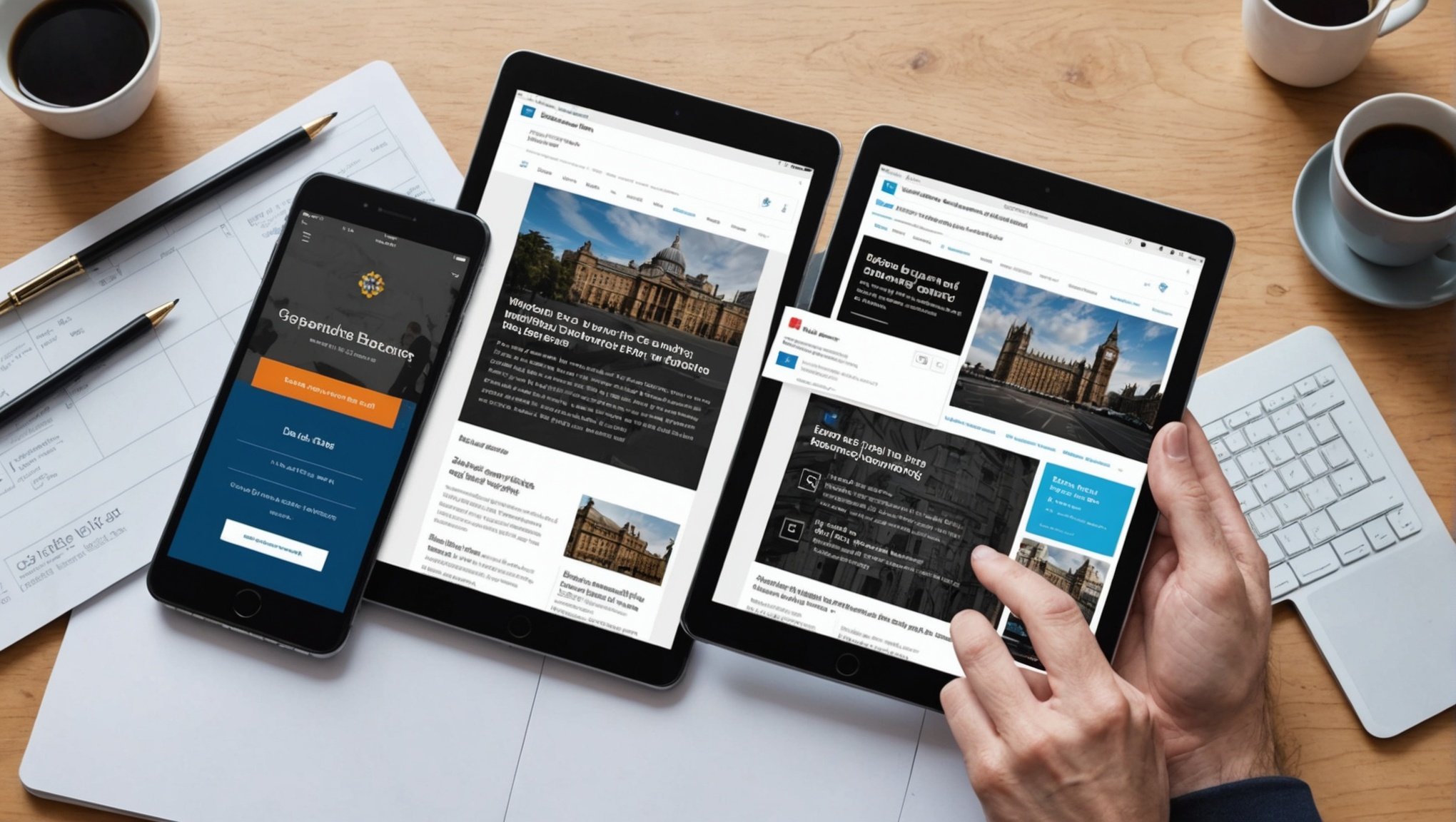Overview of Responsive Design in Government Websites
Responsive web design is crucial for ensuring that government digital services meet the needs of all users, regardless of the device they are using. It involves creating websites that adapt seamlessly to different screen sizes and resolutions, ensuring a consistent and user-friendly experience. This is particularly important for government websites, which must cater to a wide audience, including citizens, businesses, and other stakeholders.
In the UK, accessibility standards and compliance requirements are stringent. Government websites must meet specific criteria to ensure they are accessible to everyone, including those with disabilities. This involves adhering to the Web Content Accessibility Guidelines (WCAG), which provide a set of guidelines designed to make web content more accessible. Responsive web design plays a significant role in achieving these standards, as it ensures that all users can access and navigate the website without barriers.
Topic to read : Leveraging AI: UK Travel Agencies” Guide to Anticipating Travel Trends and Boosting Customer Satisfaction
Implementing responsive design in government websites offers numerous benefits. It significantly enhances user-centered design by improving navigation, reducing bounce rates, and increasing engagement. A well-designed responsive interface promotes ease of use, making information more accessible. By prioritising a user-centered approach, government websites can provide optimal service delivery, thus fostering trust and reliability among citizens.
Essential Steps for Crafting Responsive Designs
Creating a seamless user experience starts with a comprehensive design checklist. This ensures usability across all platforms, with priority given to a mobile-first strategy.
Topic to read : Maximizing Your Digital Ad Spend: A Guide for Small Businesses in the UK
Conducting User Research
Begin by gaining an understanding of user demographics and their needs. This can be effectively achieved through targeted surveys and user testing, which provide valuable feedback. Analyzing existing website analytics further solidifies insights, allowing design adjustments to cater specifically to user behaviours and expectations.
Developing a Mobile-First Approach
When embracing a mobile-first strategy, prioritize mobile design at the outset. Techniques such as adaptable layout creation ensure functionality across various devices. Focus on speed and performance, which are paramount in mobile contexts. A streamlined mobile experience can significantly enhance overall user engagement.
Implementing Fluid Grids and Flexible Images
Fluid grids are integral in fostering flexible layouts. They enable designs to resonate with users, regardless of their device. Complementing this with flexible images ensures visual content remains responsive. Consider employing tools and frameworks designed for grid implementation, enhancing adaptability and maintaining the quality of your design across all screen sizes.
Case Studies of Successful Government Websites
Exploring successful implementations of government websites offers insightful lessons in best practices. In the UK, several government sites serve as exemplary models of responsive design. For instance, GOV.UK has been widely praised for its intuitive user interface and seamless navigation, which have significantly enhanced user engagement. The success of these platforms lies in their user-centered design ethos, prioritising accessibility and simplicity.
A crucial design decision contributing to this success was the adoption of a mobile-first approach. By focusing on enhancing mobile user experiences, these websites reached a broader audience, catering to the growing number of mobile users. This strategic move not only improved usability across devices but also increased overall visitor satisfaction.
Challenges faced during implementation included ensuring compliance with legal standards and managing the complexities of existing web infrastructures. However, these challenges provided valuable lessons in adaptability and the importance of testing.
Lessons Learned
- Prioritise responsiveness to cater to various devices.
- Include user feedback early in the design process.
- Regularly update and test systems to maintain compliance and functionality.
Implementing these best practices can help design teams create websites that both meet user needs and comply with regulatory requirements.
Accessibility Standards and Guidelines
Implementing accessibility standards is crucial to ensure all users can navigate digital content with ease. WCAG compliance is particularly significant for government services as it supports users with diverse needs. The inclusive design approach further enhances accessibility by considering the widest range of users right from the early stages of design.
Understanding WCAG Guidelines
The Web Content Accessibility Guidelines (WCAG) offer a comprehensive framework to enhance digital accessibility. These guidelines emphasize the importance of creating content that is perceivable, operable, understandable, and robust. Adhering to WCAG is not only essential for legal compliance but also for providing equitable access to information. Common issues, such as insufficient contrast and lack of screen reader compatibility, can be mitigated by following these guidelines.
Tools and Resources for Testing Accessibility
Various tools facilitate the testing of website accessibility. Tools like WAVE, Axe, and Lighthouse assist in evaluating and addressing digital accessibility issues. Integrating these checks into the design process ensures potential barriers are identified early. Design teams should engage in ongoing training to stay updated with accessibility advancements and maintain an inclusive approach.
Case for Inclusive Design
Inclusive design benefits all user groups by considering varied abilities and contexts of use. Responsive design must ensure accessibility is upheld across different devices. Governments have embraced inclusive design principles, creating websites that provide seamless access to information for everyone.
Tools and Resources for Responsive Design Implementation
Responsive design has become vital for developing websites that adapt seamlessly across devices. To achieve this, employing the right design tools is crucial. Design tools like Sketch, Adobe XD, and Figma are popular due to their robust features tailored for responsive design. Each tool offers unique functionalities like prototyping, collaboration, and easy integration with other development tools. These enable designers to create flexible layouts efficiently.
When selecting design and development tools, consider factors like ease of use, compatibility with existing software, and the ability to facilitate teamwork. Prioritising tools that offer real-time collaboration and cloud-based storage can streamline workflow and make design iteration more effective.
For those looking to enhance their skills, numerous resources cater to continuous learning in responsive design. Online platforms such as Coursera, Udemy, and LinkedIn Learning provide courses tailored to different levels of expertise. Access to community forums and blogs can also offer helpful insights into current trends and best practices in responsive design.
With the right mix of tools and a commitment to ongoing learning, implementing robust responsive designs becomes not just possible, but efficient and innovative.











